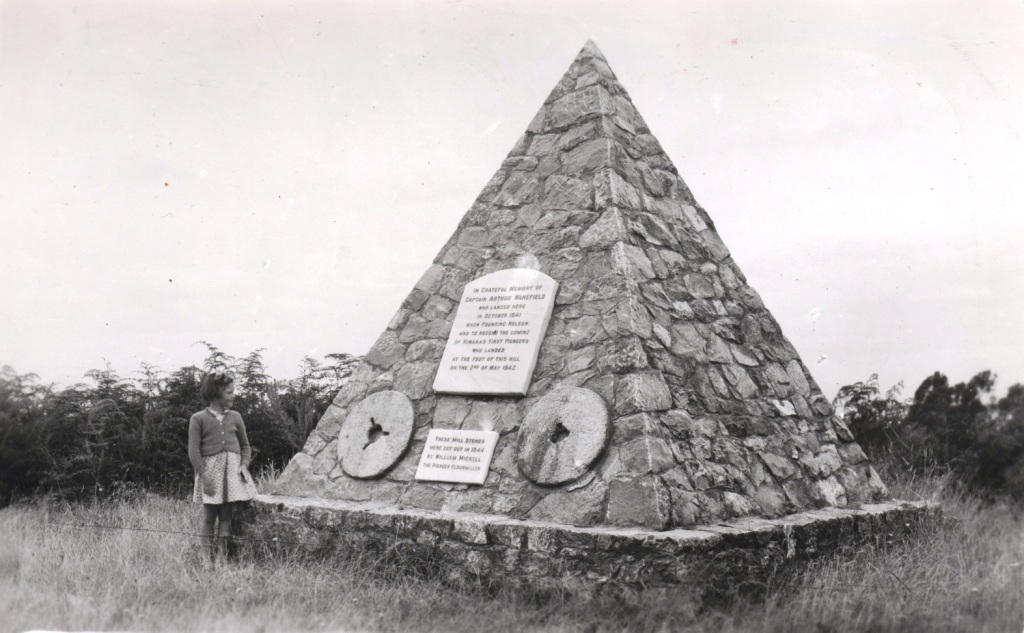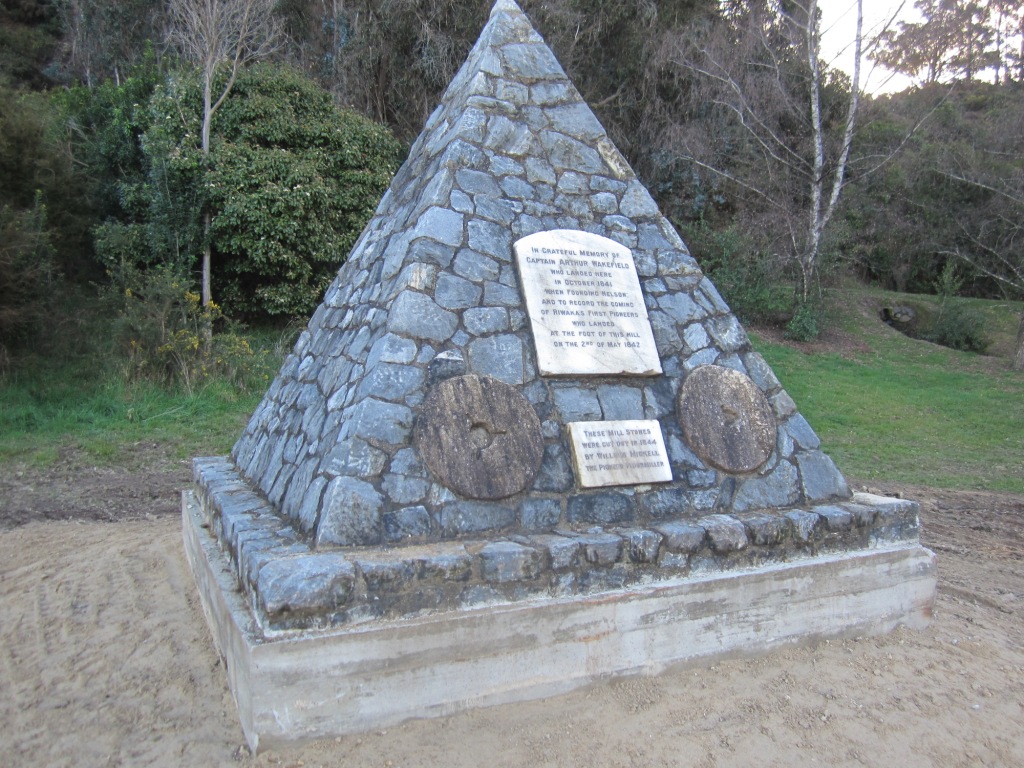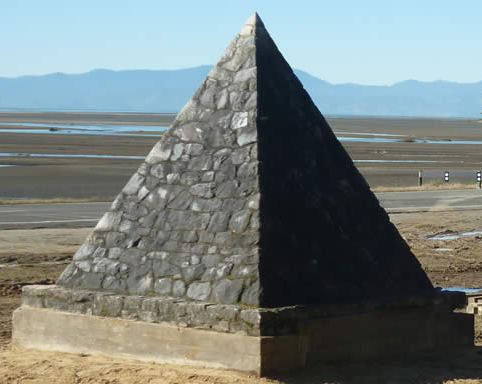Wakefield's Memorial Riwaka and Puketawai Pā
Kaiteriteri/ Puketawai Reserve and Captain Wakefield’s memorial In August 2014 a pyramidal rock memorial, celebrating Captain Wakefield's landing in October 1841 and the arrival place of Riwaka's pioneer settlers in May 1842, was moved to a new location on the Riwaka to Kaiteriteri Road.
Kaiteriteri/ Puketawai Reserve and Captain Wakefield’s memorial
In August 2014 a pyramidal rock memorial, celebrating Captain Wakefield's landing in October 1841 and the arrival place of Riwaka's pioneer settlers in May 1842, was moved to a new location on the Riwaka to Kaiteriteri Road. The move was in advance of the Te Tauihu claims settlement, which returned Puketawai Pā reserve to local iwi: Ngāti Rārua, Ngāti Tama and Te Ātiawa. The memorial had been hidden from view of the road, when the road line was changed near the Pā site to a coastal route and the move further down the hill, away from the Pā, was widely welcomed.
The Memorial
Moving the memorial from Pā Point was a significant undertaking, as it weighed approximately 31.5 tons: a four metre high pyramid of Takaka marble.
The cairn was donated by Mr and Mrs Robert Pattie, former Riwaka residents living in Richmond, and a plaque on the pyramid commemorates the landing at Puketawai of Captain Arthur Wakefield in October 1841 and "the coming of Riwaka's first pioneers who landed at the foot of this hill on the 2nd of May 1842". Captain Wakefield had entered Blind Bay, now known as Tasman Bay, in October 1841 seeking a suitable permanent location for New Zealand Company Settlers. He arrived at Kaiteriteri on 9 October and walked over the hill to the Pā at the mouth of the Motueka River, and subsequently established a camp at Kaiteriteri. Here he met local chiefs to discuss land purchases - the first meeting between tangata whenua and representatives of the New Zealand Company, whose sole purpose was to colonise a “new” country.
The cairn features two millstones cut in 1844 by Brooklyn miller William Mickell, the first stones used to grind flour in the district. It was formally “opened” by Keith Holyoake, then the MP for the district, on April 1, 1934.
The year following the establishment of the Memorial, the area around it formally became the Riwaka Pioneer’s Memorial Reserve and was added to the Kaiteriteri Reserve in 1944, along with the rest of the land at Pā Point. Previously it had been designated a Military Reserve.
Puketawai Pā and Kaiteriteri Reserve
Puketawai was a defended Pā on the south side of Kaiteriteri near the mouth of the Riuwaka (Riwaka) River, with commanding views of the Bay. Kaiteriteri, sitting below it, was an undefended Pā, or Kāinga, known as Kaka Pā – on what is now Kaka Pā Point. Puketawai contains rich, but damaged Māori remains and artefacts – including terraces and oven middens. There were several pits in close proximity to the Memorial, within the Pā site.
During the 1840’s most of the Māori of the Kaiteriteri area moved to Motueka, but the Reserve contains remains of cultural significance to local iwi and is protected under the Historic Places Act 1993. The area became a Reserve as early as 1936, with the New Zealand Company’s original campsite being gazetted in that year, around the time when recreational campers first started coming to the beach. A small shop and changing sheds were established in 1936.
Land was added to the Kaiteriteri Reserve, so that by 1942 it included the full area of the original campsite, the hill and Kaka Pā Point, part of the estuary behind and the beach frontage and Puketawai Pā.
2015 (updated 2021)
Read the iwi settling group's statements about Kaiteriteri Reserve and Puketawai: excerpts from Te Tau Ihu Statutory Acknowledgements 2014. [PDF]
Story by: Based on an article by Ken Wright
Further Sources
Books
- Campbell, H. (2006) Kaiteriteri Recreation Reserve and Kaka Point Historic Reserve Management Plan. Department of Conservation (2015) Retrieved Sep 2021
https://www.doc.govt.nz/globalassets/documents/about-doc/policies-and-plans/conservation-management/kaiteriteri-kaka-point-reserves-management-plan.pdf - Challis (1978) Motueka : an archaeological survey. Auckland : Longman Paul
http://www.worldcat.org/oclc/4932467
Newspapers
- Harley, J. (1957, May) Centennial Preparations. Nelson Historical Society Journal, 1(2), p.2
http://nzetc.victoria.ac.nz/tm/scholarly/tei-NHSJ01_02-t1-body1-d1.html - Paulin, A. (2013, August 14) Memorial cairn will soon be on the move. Nelson Mail. Retrieved from Stuff.
http://www.stuff.co.nz/nelson-mail/news/9040076/Memorial-cairn-will-soon-be-on-the-move
Websites
- Points of interest (1960, January 1) Nelson Photo News, p.8
http://photonews.org.nz/nelson/issue/NPN000_BeautifulNelson/t1-body-d6.html


